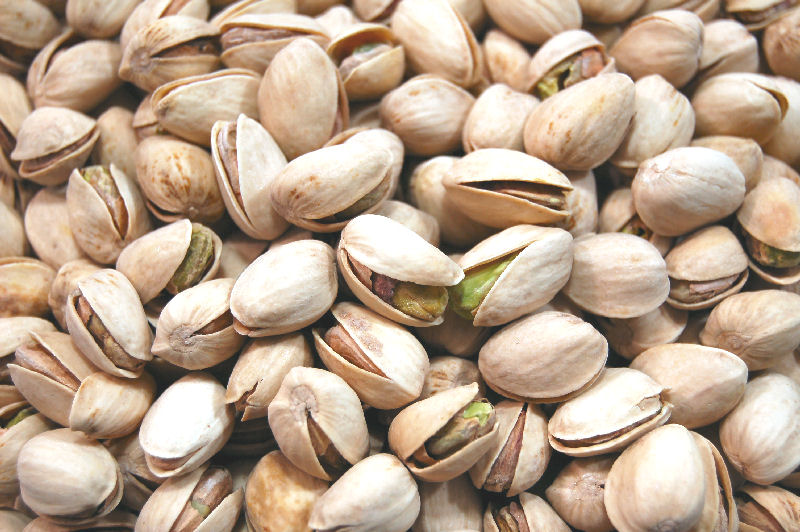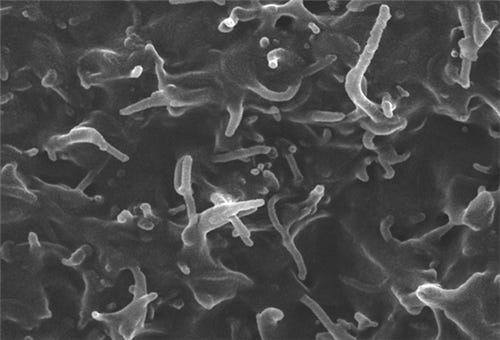Nanocomposites in a nutshell
Biocomposites and nanotechnology are two areas drawing attention today from researchers and the industry alike. In Iran, researchers from, among others, Isfahan University of Technology have combined the two to produce a new kind of nanocomposite, based on pistachio shell, an agro-waste that has high tensile strength. The wood-plastic nanocomposite can be used in the building industry, and it is resistant to humidity, loss of color and various types of fungi and insects.
August 4, 2014

Biocomposites and nanotechnology are two areas drawing attention today from researchers and the industry alike. In Iran, researchers from, among others, Isfahan University of Technology have combined the two to produce a new kind of nanocomposite, based on pistachio shell, an agro-waste that has high tensile strength. 
The wood-plastic nanocomposite can be used in the building industry, and it is resistant to humidity, loss of color and various types of fungi and insects. And in the best sustainable tradition, it has the added virtue of being derived from a locally generated source of filler material.
As one of the world's top pistachio producers, Iran annually produces and exports thousands of tons of pistachio nuts to other countries. The country therefore has ready access to a reliable source of pistachio shell waste. The structure of pistachio shell and its components, specifically cellulose, hemicelluloses and lignin, make this material an appropriate choice for the production of biocomposites.
 Iranian researchers used pistachio shells to produce a new type of nanocomposite.The researchers looked at the effects of different loadings of nanoclay as a secondary reinforcement and two different UV stabilizers on the tensile properties, impact, loss of color and resistance to weathering of a pistachio shell flour/high-density PE composite.
Iranian researchers used pistachio shells to produce a new type of nanocomposite.The researchers looked at the effects of different loadings of nanoclay as a secondary reinforcement and two different UV stabilizers on the tensile properties, impact, loss of color and resistance to weathering of a pistachio shell flour/high-density PE composite.
Their results showed that the best increase in tensile strength and tensile module occurred with the addition of three parts per hundred nanoclay to the formulation. Upping this percentage to six yielded the opposite result. Tensile strength increased 27% by adding nanoclay in a ratio of 3 parts per hundred, while it decreased 4% at a concentration of six parts per hundred composite. The nanoclay presence in HDPE/ PSF formulation improved the water absorption resistance.
Another study, which examined the effects of nanoclay particles and pistachio shell flour on the mechanical properties of wood-plastic composites carried out by researchers at Iran's Islamic Azad University at Karaj also turned up interesting findings. The results of this study showed that adding a 1% and 3% by weight loading of nanoclay particles to the formulation increased the impact resistance and the tensile strength; adding 5% nanoclay caused an increase in the bending strength, bending and tensile modules of wood-plastic composite. Adding 25% pistachio flour and 35% pistachio shell flour increased the tensile strength and the impact resistance; this same effect was seen at 35%. However, a 50% by weight loading of pistachio shell flour was found to cause an increase in the bending strength and the tensile and bending modules of the wood-plastic composite. The results also demonstrated that using 25% and 35% pistachio shell flour increases the sheared impact resistance compared to 50% treatment in wood-plastic nanocomposites.
Plastic wood composites, say the Iranian researchers, have a very good compatibility with the environment. The material they have created and studied is made of a locally sourced waste product and recyclable plastic materials. It requires less maintenance, resulting in lower costs, compared to rough wood, while at the same time displaying high resistance to decay, fungi and insects.
While promising, the next step that is indicated is a study on the feasibility of mass production of these pistachio-based nanocomposite materials.
About the Author(s)
You May Also Like


